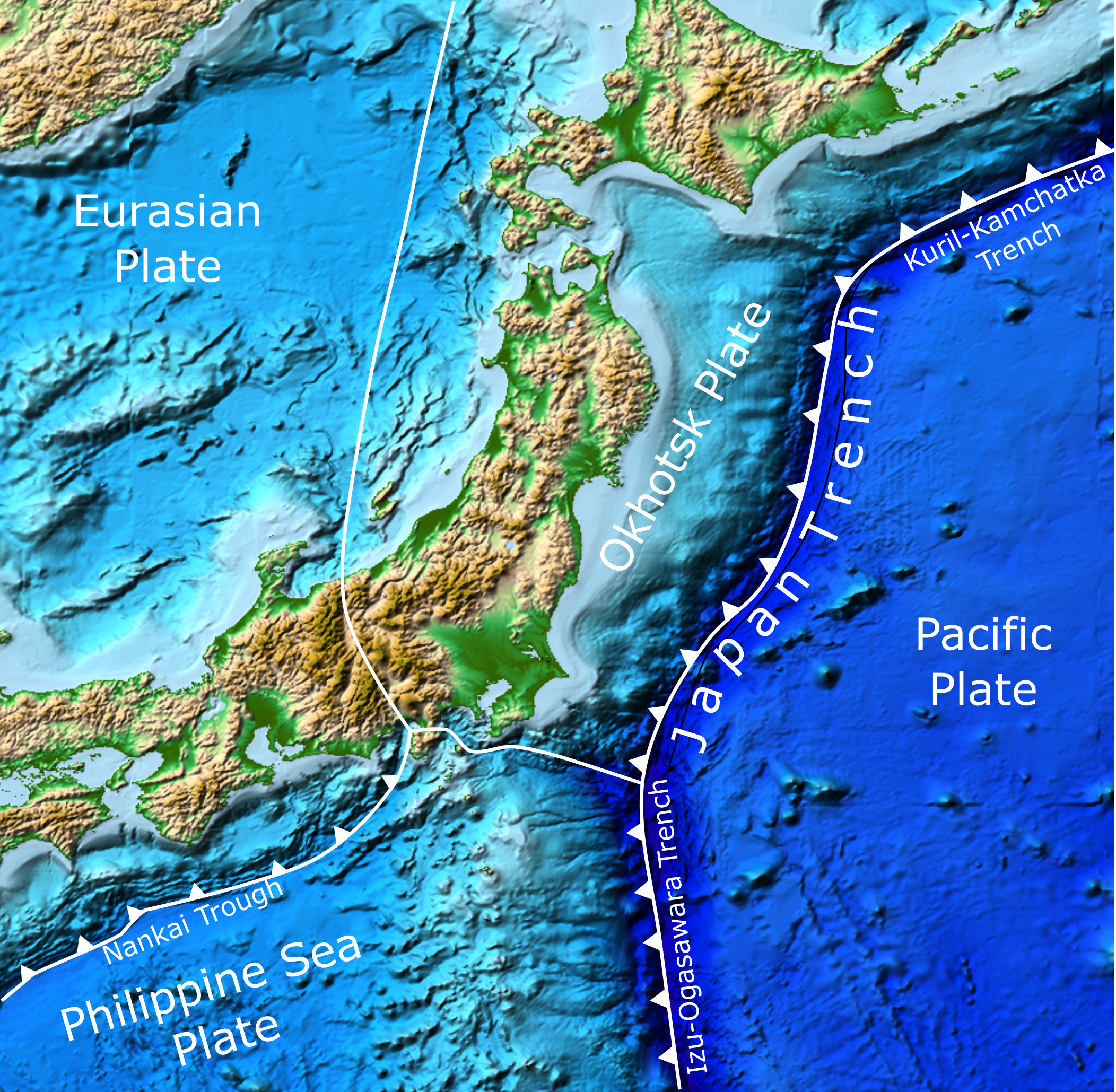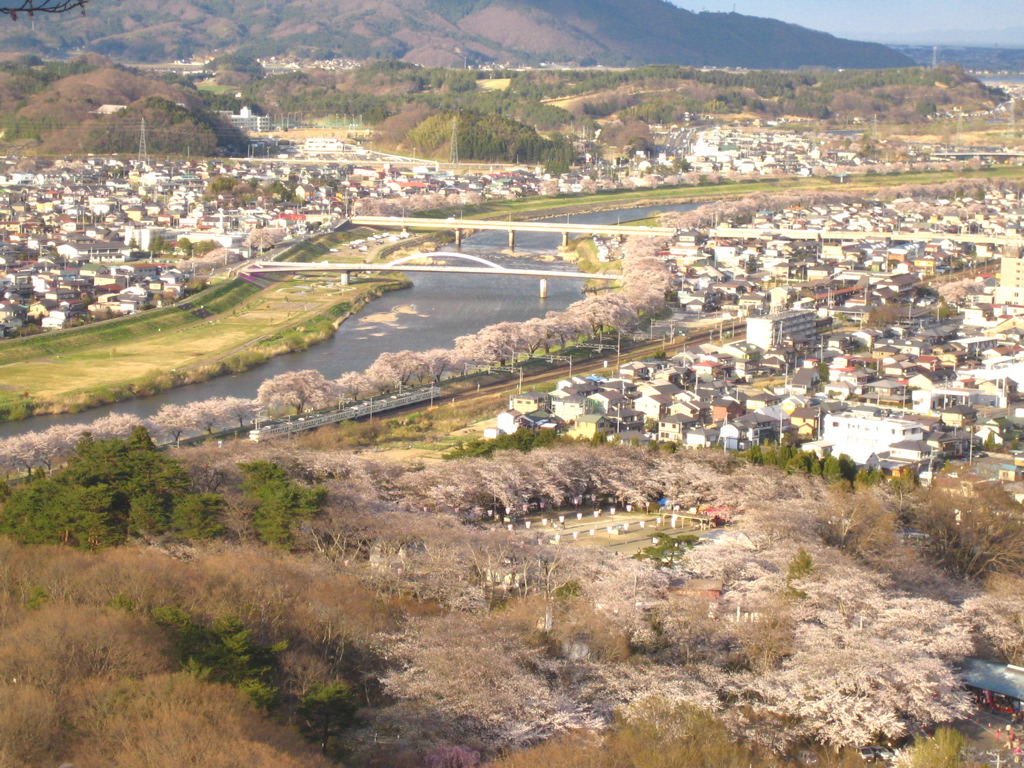|
Abukuma Express Line
The is a railway line in Japan, owned and operated by the third sector operator AbukumaExpress. The line connects Fukushima Station in Fukushima Prefecture and Tsukinoki Station in Miyagi Prefecture. Both of these stations are also on the Tōhoku Main Line operated by East Japan Railway Company (JR East). Station list History The line first opened on 1 April 1968 as the , operated by Japanese National Railways (JNR) between Tsukinoki and Marumori. The original plan was to create a bypass route to relieve overcrowding on the Tōhoku Main Line, but work to extend the line was suspended following the quadrupling of tracks on the Tōhoku Main Line. In September 1981, the line was proposed for possible closure. Ownership of the line was transferred to the third-sector Abukuma Express operator from 1 July 1986, initially using former JNR KiHa 22 diesel trains. The entire line was opened and electrified between Tsukino and Fukushima from 1 July 1988. On 14 February 2021, all ... [...More Info...] [...Related Items...] OR: [Wikipedia] [Google] [Baidu] |
Heavy Rail
Various terms are used for passenger railway lines and equipment; the usage of these terms differs substantially between areas: Rapid transit A rapid transit system is an electric railway characterized by high speed (~) and rapid acceleration. It uses passenger railcars operating singly or in multiple unit trains on fixed rails. It operates on separate rights-of-way from which all other vehicular and foot traffic are excluded (i.e. is fully grade-separated from other traffic). It uses sophisticated signaling systems, and high platform loading. Originally, the term ''rapid transit'' was used in the 1800s to describe new forms of quick urban public transportation that had a right-of-way separated from street traffic. This set rapid transit apart from horsecars, trams, streetcars, omnibuses, and other forms of public transport. A variant of the term, ''mass rapid transit (MRT)'', is also used for metro systems in Southeast Asia and Taiwan. Though the term was almost alway ... [...More Info...] [...Related Items...] OR: [Wikipedia] [Google] [Baidu] |
Date, Fukushima
is a city in Fukushima Prefecture, Japan. , the city had an estimated population of 59,625 in 22,843 households and a population density of 220 persons per km2. The total area of the city was . Geography Date occupies the eastern half of the Fukushima Basin in northern Fukushima prefecture, with Miyagi Prefecture on its northern border. The area was once noted for sericulture but transitioned to fruit cultivation during the Taishō period. It is currently organized into the five former towns of Date, Hobara, Yanagawa, Ryozen, and Tsukidate, each of which retain numerous unique traditions and events. Hobara is the central area, where the municipal government is based. *Rivers: Abukuma River, Hirose River Neighboring municipalities Fukushima Prefecture * Sōma * Fukushima * Kunimi * Kawamata * Koori * Iitate Miyagi Prefecture * Shiroishi *Marumori Climate Date has a humid climate (Köppen climate classification ''Cfa''). The average annual temperature in Date is . T ... [...More Info...] [...Related Items...] OR: [Wikipedia] [Google] [Baidu] |
Japanese Third-sector Railway Lines
Japanese may refer to: * Something from or related to Japan, an island country in East Asia * Japanese language, spoken mainly in Japan * Japanese people, the ethnic group that identifies with Japan through ancestry or culture ** Japanese diaspora, Japanese emigrants and their descendants around the world * Japanese citizens, nationals of Japan under Japanese nationality law ** Foreign-born Japanese, naturalized citizens of Japan * Japanese writing system, consisting of kanji and kana * Japanese cuisine, the food and food culture of Japan See also * List of Japanese people * * Japonica (other) * Japonicum * Japonicus This list of Latin and Greek words commonly used in systematic names is intended to help those unfamiliar with classical languages to understand and remember the scientific names of organisms. The binomial nomenclature used for animals and plants i ... * Japanese studies {{disambiguation Language and nationality disambiguation pages ... [...More Info...] [...Related Items...] OR: [Wikipedia] [Google] [Baidu] |
1968 Establishments In Japan
The year was highlighted by protests and other unrests that occurred worldwide. Events January–February * January 5 – "Prague Spring": Alexander Dubček is chosen as leader of the Communist Party of Czechoslovakia. * January 10 – John Gorton is sworn in as 19th Prime Minister of Australia, taking over from John McEwen after being elected leader of the Liberal Party the previous day, following the disappearance of Harold Holt. Gorton becomes the only Senator to become Prime Minister, though he immediately transfers to the House of Representatives through the 1968 Higgins by-election in Holt's vacant seat. * January 15 – The 1968 Belice earthquake in Sicily kills 380 and injures around 1,000. * January 21 ** Vietnam War: Battle of Khe Sanh – One of the most publicized and controversial battles of the war begins, ending on April 8. ** 1968 Thule Air Base B-52 crash: A U.S. B-52 Stratofortress crashes in Greenland, discharging 4 nuclear bombs. * January 23 ... [...More Info...] [...Related Items...] OR: [Wikipedia] [Google] [Baidu] |
Railway Lines Opened In 1968
Rail transport (also known as train transport) is a means of transport that transfers passengers and goods on wheeled vehicles running on rails, which are incorporated in tracks. In contrast to road transport, where the vehicles run on a prepared flat surface, rail vehicles (rolling stock) are directionally guided by the tracks on which they run. Tracks usually consist of steel rails, installed on sleepers (ties) set in ballast, on which the rolling stock, usually fitted with metal wheels, moves. Other variations are also possible, such as "slab track", in which the rails are fastened to a concrete foundation resting on a prepared subsurface. Rolling stock in a rail transport system generally encounters lower frictional resistance than rubber-tyred road vehicles, so passenger and freight cars (carriages and wagons) can be coupled into longer trains. The operation is carried out by a railway company, providing transport between train stations or freight customer facil ... [...More Info...] [...Related Items...] OR: [Wikipedia] [Google] [Baidu] |
1067 Mm Gauge Railways In Japan
1 (one, unit, unity) is a number representing a single or the only entity. 1 is also a numerical digit and represents a single unit of counting or measurement. For example, a line segment of ''unit length'' is a line segment of length 1. In conventions of sign where zero is considered neither positive nor negative, 1 is the first and smallest positive integer. It is also sometimes considered the first of the infinite sequence of natural numbers, followed by 2, although by other definitions 1 is the second natural number, following 0. The fundamental mathematical property of 1 is to be a multiplicative identity, meaning that any number multiplied by 1 equals the same number. Most if not all properties of 1 can be deduced from this. In advanced mathematics, a multiplicative identity is often denoted 1, even if it is not a number. 1 is by convention not considered a prime number; this was not universally accepted until the mid-20th century. Additionally, 1 is ... [...More Info...] [...Related Items...] OR: [Wikipedia] [Google] [Baidu] |
Abukuma Express Line
The is a railway line in Japan, owned and operated by the third sector operator AbukumaExpress. The line connects Fukushima Station in Fukushima Prefecture and Tsukinoki Station in Miyagi Prefecture. Both of these stations are also on the Tōhoku Main Line operated by East Japan Railway Company (JR East). Station list History The line first opened on 1 April 1968 as the , operated by Japanese National Railways (JNR) between Tsukinoki and Marumori. The original plan was to create a bypass route to relieve overcrowding on the Tōhoku Main Line, but work to extend the line was suspended following the quadrupling of tracks on the Tōhoku Main Line. In September 1981, the line was proposed for possible closure. Ownership of the line was transferred to the third-sector Abukuma Express operator from 1 July 1986, initially using former JNR KiHa 22 diesel trains. The entire line was opened and electrified between Tsukino and Fukushima from 1 July 1988. On 14 February 2021, all ... [...More Info...] [...Related Items...] OR: [Wikipedia] [Google] [Baidu] |
2021 Fukushima Earthquake
An intense and deadly seismic event struck offshore east of Tōhoku, Japan. The 7.3 or 7.1 earthquake occurred on a Saturday night at 23:07 JST (14:07 UTC) on 13 February at a focal depth of . It had a maximum JMA intensity of ''Shindo'' 6+ to ''Shindo'' 7 while on the Mercalli intensity scale, earned a rating of VIII (''Severe''). The earthquake was followed by multiple aftershocks within less than an hour, three of which registering magnitude 5.3. The earthquake itself has been considered an aftershock of the 2011 Tōhoku earthquake which had occurred almost ten years prior. The earthquake left three people dead, and at least 186 injured. It also inflicted significant structural damage across the Tōhoku and Kanto regions. This earthquake resulted in both insurance claims and losses exceeding ¥138billion (US$1.3billion). Small tsunami waves were also observed without any damage. Because of its proximity to the Fukushima Daiichi Nuclear Power Plant, the event provoked ... [...More Info...] [...Related Items...] OR: [Wikipedia] [Google] [Baidu] |
Abukuma Express Line'S Anniversary Festival
Abukuma may refer to: *Places in Japan: ** Abukuma River ** Abukuma Highlands ** Abukuma-do, limestone caves in Fukushima, Japan **Abukuma Express Line The is a railway line in Japan, owned and operated by the third sector operator AbukumaExpress. The line connects Fukushima Station in Fukushima Prefecture and Tsukinoki Station in Miyagi Prefecture. Both of these stations are also on the ..., a railroad line ** Abukuma Station * Japanese cruiser ''Abukuma'', a World War II cruiser of the Imperial Japanese Navy {{disambiguation ja:阿武隈 ... [...More Info...] [...Related Items...] OR: [Wikipedia] [Google] [Baidu] |
Japanese National Railways
The abbreviated JNR or , was the business entity that operated Japan's national railway network from 1949 to 1987. Network Railways As of June 1, 1949, the date of establishment of JNR, it operated of narrow gauge () railways in all 46 prefectures of Japan. This figure expanded to in 1981 (excluding Shinkansen), but later reduced to as of March 31, 1987, the last day of JNR. JNR operated both passenger and freight services. Shinkansen Shinkansen, the world's first high-speed railway was debuted by JNR in 1964. By the end of JNR in 1987, four lines were constructed: ; Tōkaidō Shinkansen: , completed in 1964 ; Sanyō Shinkansen: , completed in 1975 ; Tōhoku Shinkansen: , as of 1987 ; Jōetsu Shinkansen: , completed in 1982 Buses JNR operated bus lines as feeders, supplements or substitutions of railways. Unlike railway operation, JNR Bus was not superior to other local bus operators. The JR Bus companies are the successors of the bus operation of JNR. Ships JNR ... [...More Info...] [...Related Items...] OR: [Wikipedia] [Google] [Baidu] |
Shibata, Miyagi
is a town located in Miyagi Prefecture, Japan. , the town had an estimated population of 37,617, and a population density of 700 persons per km² in 15,590 households. The total area of the town is . Geography Shibata is located in south-central Miyagi Prefecture in the Tōhoku region of northern Japan. The Abukuma River runs through the town. Neighboring municipalities Miyagi Prefecture *Iwanuma * Kakuda * Natori * Ōgawara * Murata * Watari Climate Shibata has a humid climate (Köppen climate classification ''Cfa'') characterized by mild summers and cold winters. The average annual temperature in Shibata is 12.5 °C. The average annual rainfall is 1263 mm with September as the wettest month. The temperatures are highest on average in August, at around 24.9 °C, and lowest in January, at around 1.4 °C. Demographics Per Japanese census data, the population of Shibata increased throughout the 20th century and has declined slightly in the 21st. History ... [...More Info...] [...Related Items...] OR: [Wikipedia] [Google] [Baidu] |







